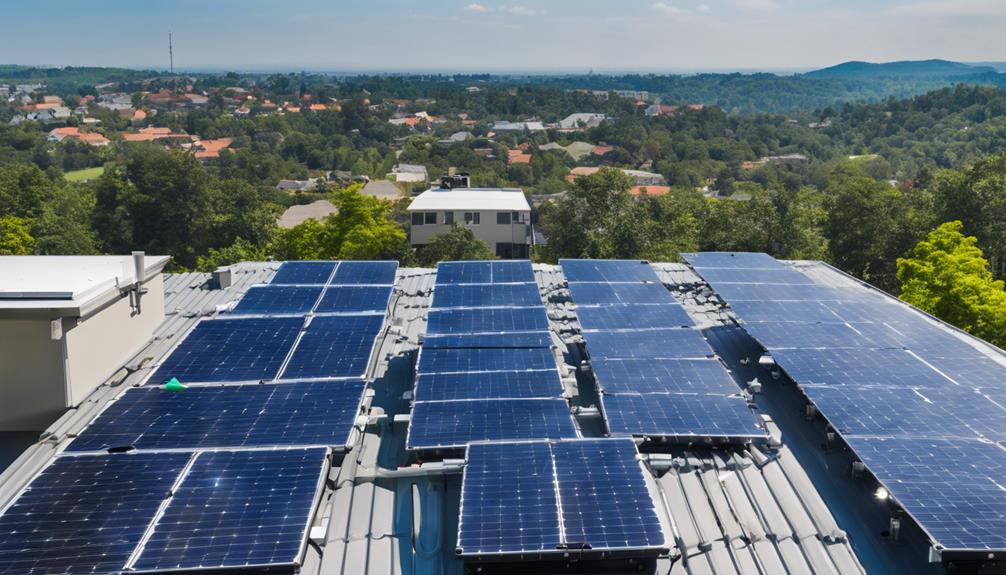
What Are Thermal Panels?
Thermal panels, also known as solar thermal panels or solar water heating panels, are devices designed to collect and convert sunlight into heat. These panels are primarily used for heating water for residential and commercial applications. Unlike photovoltaic solar panels, which convert sunlight directly into electricity, thermal panels use a different technology that focuses on harnessing thermal energy. Typically made of flat or evacuated tubes, thermal panels are highly effective in capturing solar radiation, making them an essential component of sustainable energy systems.
How Do Thermal Panels Work?
The operation of thermal panels is relatively straightforward. They absorb sunlight through a collector surface, which is usually coated with a special material that enhances heat absorption. This absorbed sunlight heats a fluid—usually water or a glycol solution—that circulates through the panels. The heated fluid is then transferred to a storage tank or used directly for heating applications. The efficiency of thermal panels can be influenced by several factors, including their location, orientation, and the amount of sunlight they receive. Proper installation and maintenance are crucial for maximizing their efficiency and lifespan.
The Advantages of Using Thermal Panels
Investing in thermal panels offers numerous benefits. Firstly, they significantly reduce energy bills by providing a renewable source of hot water. Homeowners can save up to 50-80% on their water heating costs, depending on the size of the system and local climate conditions. Moreover, thermal panels reduce reliance on fossil fuels, contributing to a decrease in greenhouse gas emissions. Additionally, many governments offer incentives for installing solar thermal systems, making them a financially appealing option. The durability of thermal panels also means that they can provide reliable service for 20 years or more with proper care.
Different Types of Thermal Panels
There are primarily two types of thermal panels: flat-plate collectors and evacuated tube collectors. Flat-plate collectors consist of a flat, insulated box with a transparent cover that allows sunlight to enter and heat the absorbent surface inside. They are commonly used in residential applications due to their cost-effectiveness and ease of installation. On the other hand, evacuated tube collectors consist of rows of glass tubes that create a vacuum, providing enhanced insulation and better performance in colder climates. Understanding the differences between these types can help you choose the right system for your needs.
Applications of Thermal Panels
Thermal panels have a wide range of applications beyond domestic hot water heating. They can be utilized for space heating, pool heating, and even in industrial processes requiring hot water or steam. In residential settings, thermal panels can be integrated with existing heating systems to boost efficiency. For example, they can preheat water before it enters a conventional water heater, reducing energy consumption. In commercial applications, thermal systems can be employed for large-scale water heating needs, such as in hotels, restaurants, and laundries. The versatility of thermal panels makes them an attractive option for various sectors.
Installation Process of Thermal Panels
Installing thermal panels requires careful planning and execution to ensure optimal performance. The first step is to assess the site where the panels will be installed. This includes evaluating sunlight exposure, roof structure, and local regulations. Once the site is determined, the installation process typically involves mounting the panels on the roof or ground, connecting them to the plumbing system, and integrating them with the existing water heating system. It’s essential to hire a qualified installer to ensure that the system is set up correctly and safely. Proper installation not only maximizes efficiency but also minimizes potential maintenance issues in the future.
Maintenance and Care for Thermal Panels
Maintaining thermal panels is relatively easy, but regular checks and care can enhance their lifespan and efficiency. Homeowners should clean the panels periodically to remove dirt, dust, and debris that can obstruct sunlight absorption. It’s also important to inspect the system for leaks or any signs of wear, particularly in the plumbing connections. In colder climates, freezing temperatures can damage thermal panels, so proper winterization techniques should be employed. Many manufacturers recommend a professional inspection every few years to ensure that the system operates efficiently and to address any potential issues proactively.
The Future of Thermal Panels in Renewable Energy
As the world moves towards sustainable energy solutions, the future of thermal panels looks promising. Advances in technology are leading to higher efficiency rates and lower costs, making thermal systems more accessible to the average consumer. Additionally, the integration of thermal panels with smart home technology is on the rise, allowing homeowners to monitor their energy use and optimize their systems for maximum performance. With government incentives and a growing awareness of environmental issues, it is likely that the adoption of thermal panels will continue to increase in both residential and commercial applications.
By understanding thermal panels and their benefits, homeowners can make informed decisions about incorporating this technology into their energy systems. With their ability to reduce energy costs, contribute to environmental sustainability, and offer versatile applications, thermal panels are an excellent investment for those looking to harness the power of renewable energy.





